Box 13 is doing its part for FotoFest with four lens-based shows. The one that hit me the hardest was Identified and Objectified: A Study of the Ephemeral, featuring work by Shannon Duncan, Brittney Connelly and Bryan Forrester. Of these three artist, the one whose work I found least interesting was Brittney Connelly. Her video of her stuff being tossed onto her prone body struck me as an obvious metaphor (our stuff, our accumulative natures, weighing us down). I see this as relating to a certain romantic notion that if we could just free ourselves of material concerns, we'd be free! Perhaps I'm misinterpreting her work, but what I saw didn't impress me.
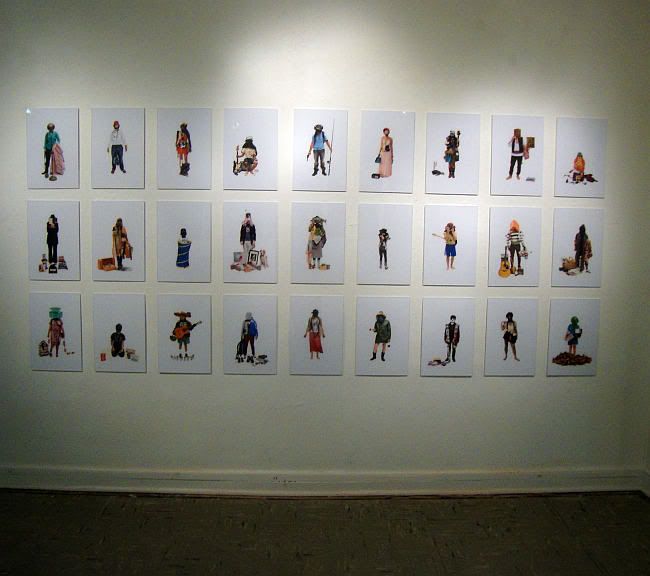
Shannon Duncan, Eu-phemera photo installation, 2011-2012
Shannon Duncan's take on a similar subject, Eu-phemera, was far better. She had friends pose with things (including clothes) that were meaningful to them. They are posed against a blank white background. Their faces are always covered. I interpret this as Duncan taking identity away from the face--the way we recognize people and consequently the primary source of their visual identity--and placing identity in the stuff itself.
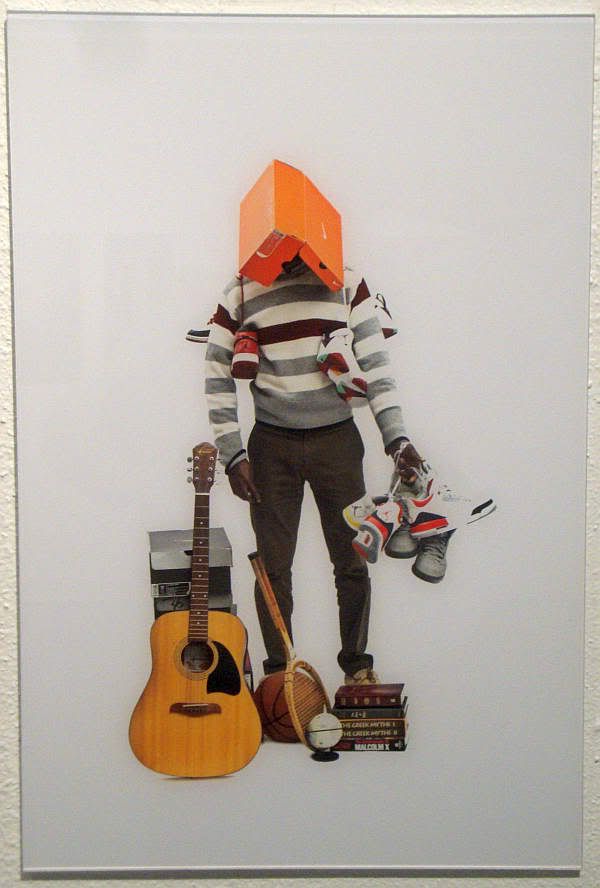
Shannon Duncan, Eu-phemera photo installation detail, 2011-2012
This guy, for example, tells us with his stuff that he's an athlete, a musician, a reader of mythology and African-American history.
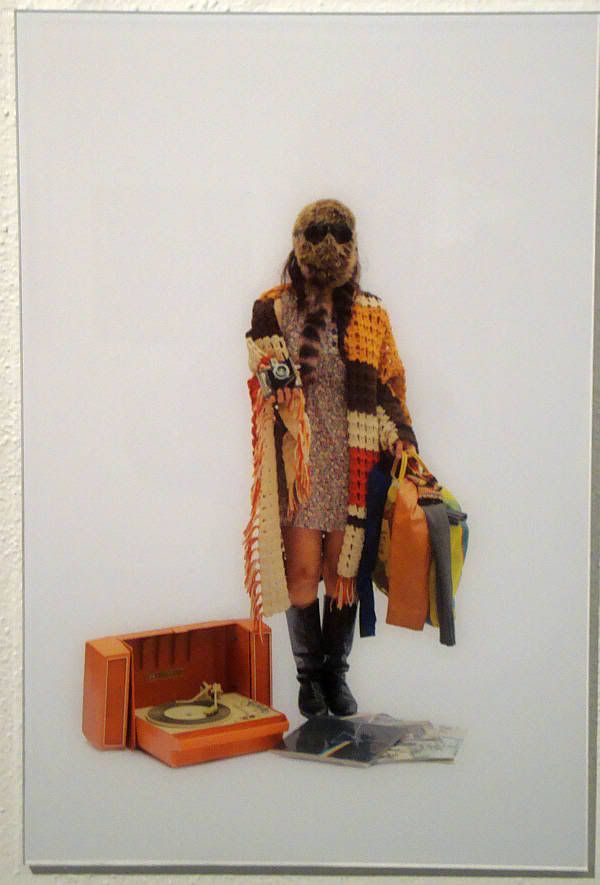
Shannon Duncan, Eu-phemera photo installation detail, 2011-2012
With her miniskirt and boots, she seems like she stepped out of the 60s, a perception that is reinforced with the cheap portable record player and knit rug. On the other hand, the Pink Floyd record and predominance of orange and brown say "70s." But oddest is the raccoon skin on her face. On of the pleasures of these photos is that they invite you to try to "figure out" the subject. Does all this stuff actually add up to one real person, after all?
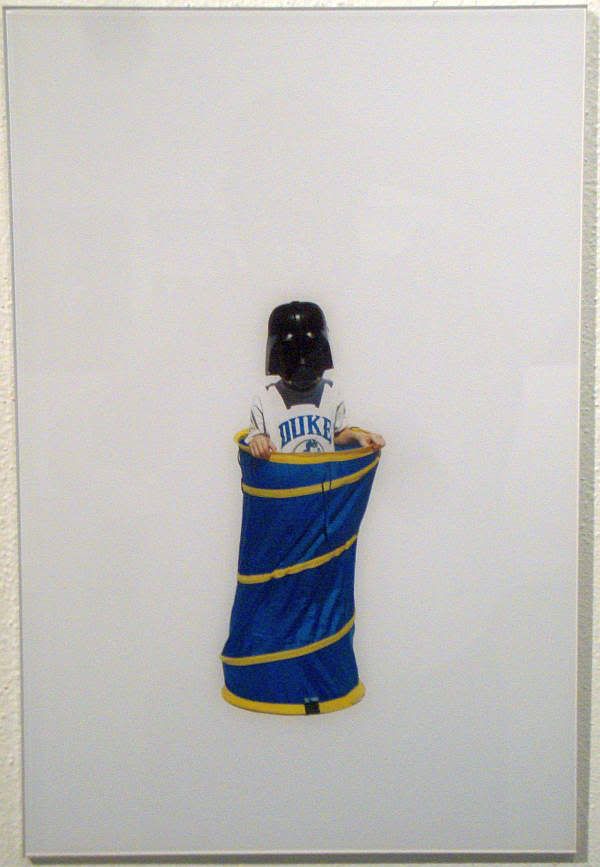
Shannon Duncan, Eu-phemera photo installation detail, 2011-2012
But sometimes the interpretation of the stuff is delightfully easy. This boy in his Darth Vader mask may serve to remind us how early our life-long relationship with stuff begins, but it's also funny and delightful. I thought this group of photos communicated pleasure--these things that people were posed with were important because they loved them. Their pleasure comes through. It's infectious.
It's nice that Shannon Duncan was able to make me smile, because Bryan Forrester's installation, Every Woman Is My Mother, was not such a happy story. The piece consists of photos and paper ephemera. I noticed the photos first, which I think was Forrester's intent. They were photos of different women (different ages, races, and body types) all dressed alike.
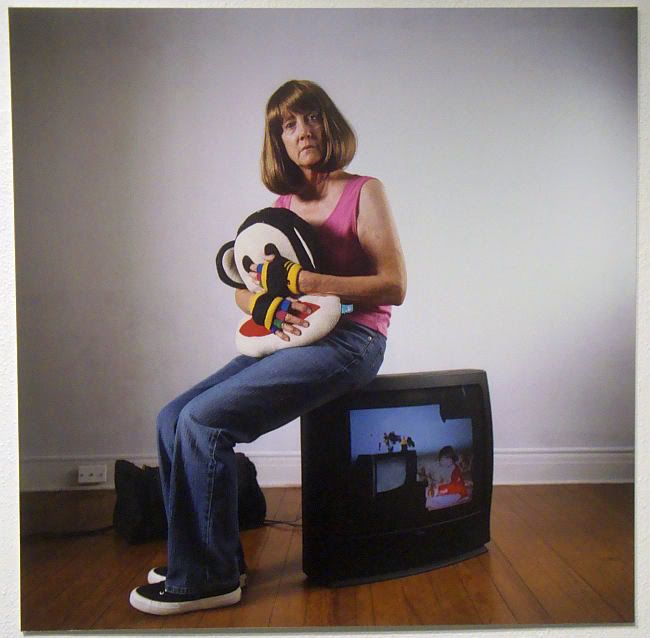
Bryan Forrester, from Every Woman Is My Mother
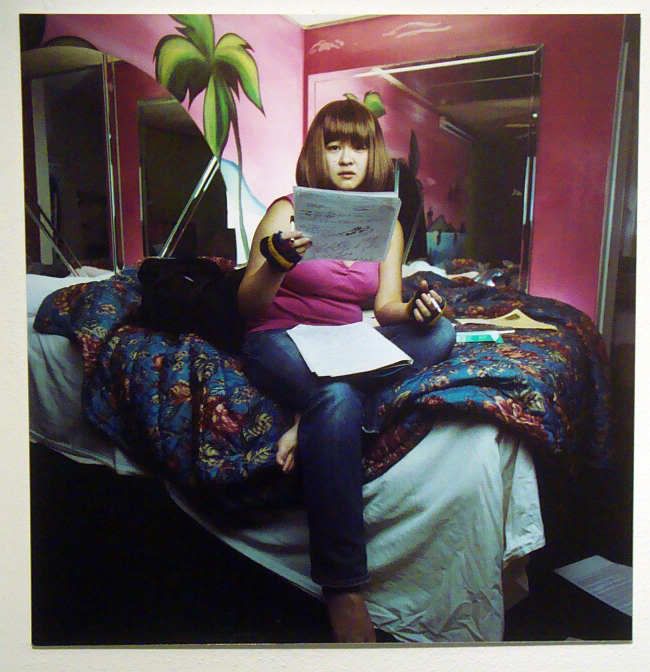
Bryan Forrester, from Every Woman Is My Mother
I am assuming that the wig and outfit come from some memory or photograph of Forrester's mother. By themselves, they are an unsettling series of images--the emotional content of the photos seems progressively more powerful and fraught. Then when we get to the back wall, where the ephemera is pinned up, the viewer gets a second punch in the gut.

Bryan Forrester, from Every Woman Is My Mother

Bryan Forrester, from Every Woman Is My Mother
(The images above have been color-corrected to make them more readable.)
Forrester's mother, a nurse, had a mental illness that caused him to become estranged from her. I assume her early death is related to this illness. This installation, which includes both his imaginings of Mary Ellen along with Mary Ellen's own notes and writing appears to be an attempt to reconnect with her posthumously. The pink tank top and jeans must be for Forrester important memory objects--perhaps this exhibit is an attempt to connect the woman in these disjointed, disturbing writings with his own memories. Possibly the jeans and tank top represent a good memory for Forrester that he is trying to latch onto. But as viewers, we can't be sure.
Every Woman Is My Mother is powerful. It made me angry at Forrester for allowing himself to become estranged from his mother, a person who obviously needed help and looking after. I realize this is unfair--but it's a response made possible by the photos and objects that Forrester puts out for us to see. The work exudes guilt and sadness. We see that Mary Ellen, whatever her problems, had goals and a desire to express herself. She is someone we can feel sympathy for--Forrester wants us to feel sympathy. The choice of documents seems to have been made in part with this goal.
A lot of art I see is dry, clever, intellectual, beautiful to look at--and I value all those things. But it's rare these days to see art that has this kind of emotional power. I still don't know what I think--feel--about it. Sadness, anger, pity. Head out to the East End and spend some time with this exceptional work.

No comments:
Post a Comment